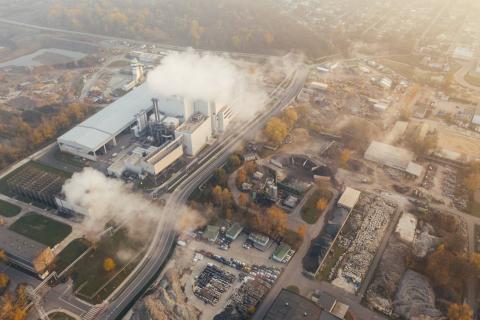A report estimates that there are three years of carbon budget left to achieve a 1.5 °C increase
The carbon available for emission without exceeding the 1.5°C limit set in the Paris Agreement—known as the carbon budget—could be exhausted in just over three years at the current rate of CO2 emissions. This is one of the conclusions of a new edition of Indicators of Global Climate Change, published in the journal Earth System Science Data. The study also shows that between 2019 and 2024, sea levels rose by an average of around 26 millimetres: more than double the rate of 1.8 mm per year recorded since the beginning of the 20th century.

Pep Canadell - informe presupuesto carbono EN
Pep Canadell
Executive Director of the Global Carbon Project and Senior Research Fellow at the CSIRO Climate Science Centre in Canberra, Australia
Once again, a new edition of global climate change indicators shows the harsh reality of what we are doing to our planet. Despite major advances in renewable energy, the replacement of fossil fuels is still not happening on a global scale. Emissions of every type of greenhouse gas—synthetic gases from industry, carbon dioxide from fossil fuels, methane from agriculture and industry, and nitrous oxide from the use of fertilisers in agriculture—continue to rise. And with them, global temperatures, heat accumulation in the oceans and sea level rise.
It has never been more urgent to accelerate the energy transition away from fossil fuels and develop less aggressive ways to produce the large amounts of food that the world's population needs. We have solutions for 90% of emissions, but we need to implement them at a much faster pace than we are currently doing. The price of inaction will cost us much more.
Ernesto Rodríguez - informe presupuesto carbono EN
Ernesto Rodríguez Camino
Senior State Meteorologist and president of Spanish Meteorological Association
For the past three years, an annual update of the main global climate change indicators has been published, following as closely as possible the methods used in the Sixth Assessment Report (AR6) of the Intergovernmental Panel on Climate Change (IPCC). In fact, one of the main conclusions of this work is that, at the current rate of CO2 emissions, in just over three years, the concentration of CO2 in the atmosphere will reach a level that will cause a 1.5 °C rise in temperature compared to pre-industrial levels.
This third update of the main indicators reinforces the AR6 message that, in order to limit warming to 1.5 °C, a rapid and far-reaching transition in energy, land use, urban and industrial systems will be required in the coming years. As this transition is not taking place with the necessary speed and scope, if we want to maintain the Paris Agreement's goal of not exceeding 1.5 °C of warming, it will be necessary in the future to remove CO2 and other greenhouse gases from the atmosphere. This ultimately constitutes an environmental burden that will be inherited by future generations, a burden caused by our inaction in the face of the causes of climate change, which are essentially the use of fossil fuels and deforestation.
María José Sanz - informe presupuesto carbono EN
María José Sanz
Scientific Director of the BC3 Basque Centre for Climate Change
This is the third year of this initiative and, above all, it highlights the importance of having better, more consistent and higher quality data series. This allows for improved estimates of selected indicators and a better understanding of the real drivers of the changes we are observing. Recent examples include the impact of anthropogenic aerosols on climate variability and the importance of the non-linearity of ocean warming and its influence on climate. The climate system and its interaction with human systems are highly complex, and we must improve and update our knowledge if we are to find solutions to slow down its negative effects and adapt. These analyses are important because we are encountering dynamics that are approaching dangerous thresholds.
This study also recognises the limitations of the analysis and does so transparently. It highlights that there are discrepancies between data sources that need to be identified and understood, respecting that the objectives for which they are obtained may condition their use and that this does not imply that they are erroneous, but they cannot necessarily be integrated. Recent steps taken by the scientific community in this direction are encouraging.
Finally, the messages are clear: emissions continue to rise and the climate system is destabilising in ways that we are beginning to understand better, but not yet fully. This can only lead us to take urgent action and accept that there are consequences that we can no longer avoid.
Piers M. Forster et al.
- Research article
- Peer reviewed



